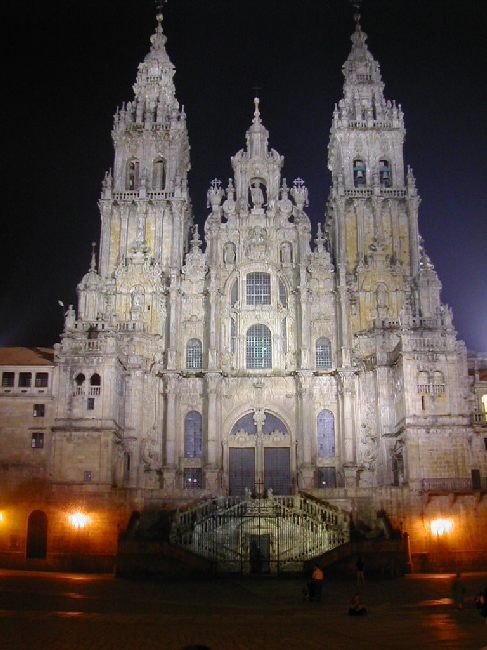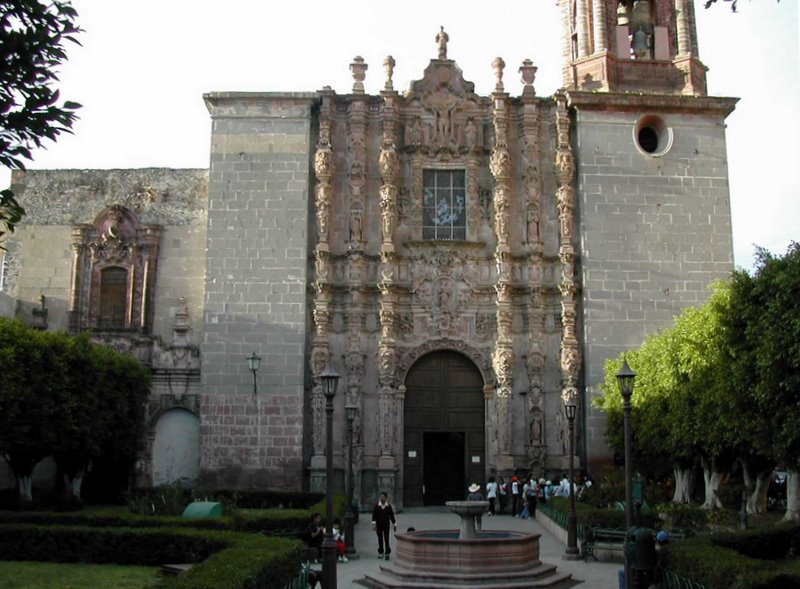 A pleasant garden fronts
the Church of San Francisco and harbors the usual activities
of the locals "hanging out."
A pleasant garden fronts
the Church of San Francisco and harbors the usual activities
of the locals "hanging out."
Invitation to the Churrigueresque
In late 18th north-central Mexico, newly wealthy mineral towns competed
with each other by building beautiful churches. Design talent
came from Mexico city where
architectural schools quickly embraced the latest fads from Spain. For many such a place as San Miguel, that meant the Churrigueresque.
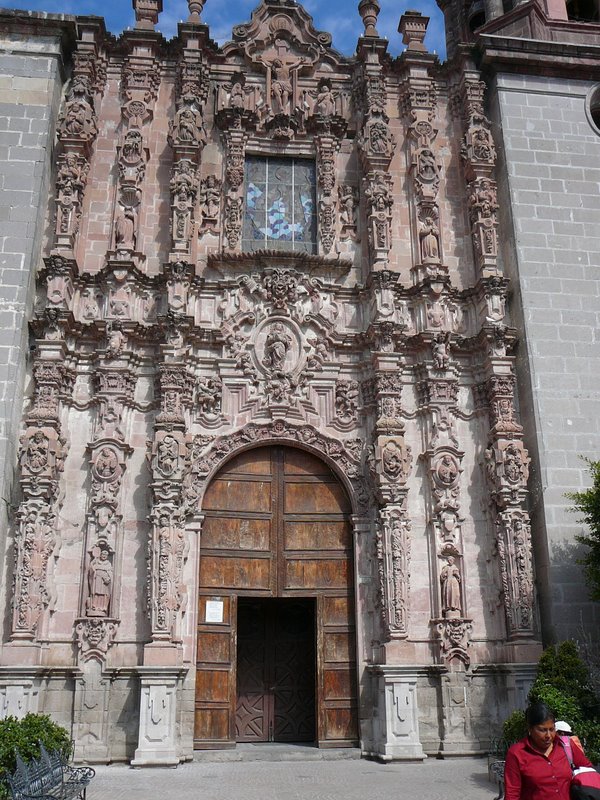
The church
of San Francisco is state-of-the-art for late 17th century
central Mexican religious design; unfortunately that was a
moving target, given shifting tastes in Spain and
Mexico City. Built over a 20-year span ending in 1799,
it was originally the church of Saint Anthony.
[219]
This makes sense as
Anthony was a rich man before joining the
Franciscans and the well-to-do of San Miguel el Grande
funded construction of this church.
St. Anthony is also the patron of lost causes. That
works here as well as the architectural decoration style
displayed here was about to become a lost art as the Spanish
and Mexico city authorities declared the
Churrigueresque to be passť.
Unfortunately, San Francisco was in the process
of being built.
What did get built using the Spanish Baroque decorative
style called
Churrigueresco was the above facade with its
six terra-cotta like columns (called
estipites) which ascend the
entire height of the building. Like good Baroque, this
facade "surprises" by contrasting the simple block frame of
the sides with the explosion of saints and other stone
carvings in the symmetrical center. Too much ain't
enough!
But fashions changed in the twenty years it took to complete
the church. Starting around
1790 in Mexico City, the excessive Churrigueresque faded and the
restrained neoclassical came into vogue. Check out these two
towers below:
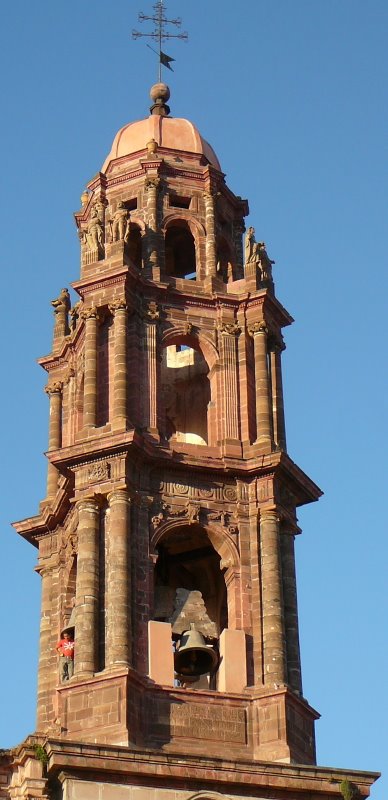
|
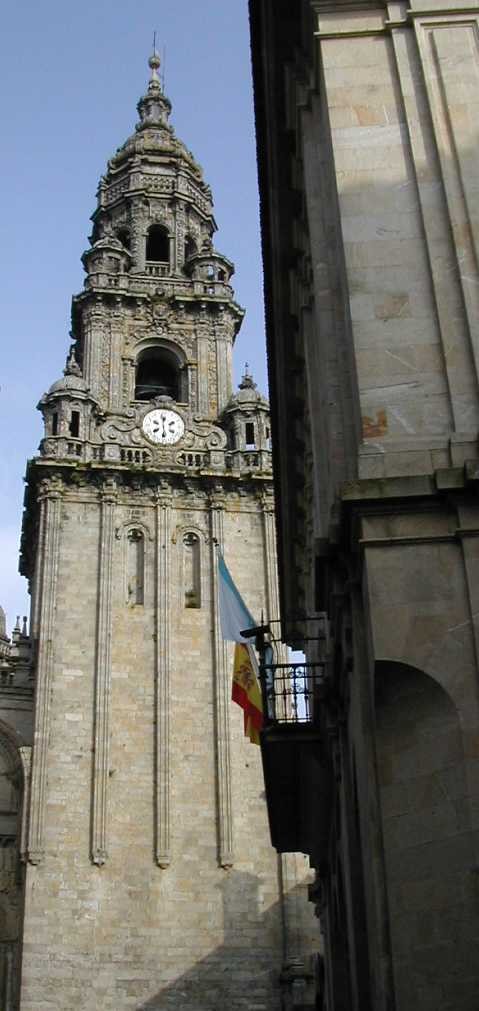
|
| San Miguel's San
Francisco Tower |
Santiago de
Compostela's South Watch Tower |
At right is one of the Churrigueresque tower of the
cathedral of Santiago de Compostela -- one of the most
significant churches in Roman Catholic history and a superb
example of the Churrigueresque. (To see more of
pictures of the exterior of this cathedral,
click here).
At left is what San Francisco got in San Miguel el Grande
(soon to become de Allende): a neoclassical structure
designed by Eduardo Tresguerras of Celaya who was brought in
to "save" the church.
[27]
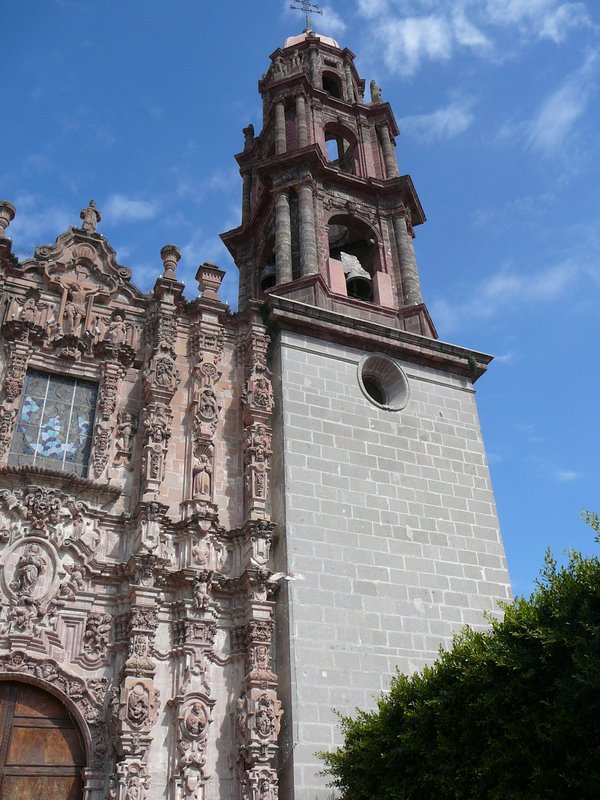
The above picture shows how this tower (over its simple
base) contrasts with the rococo Churrigueresque of the
facade.
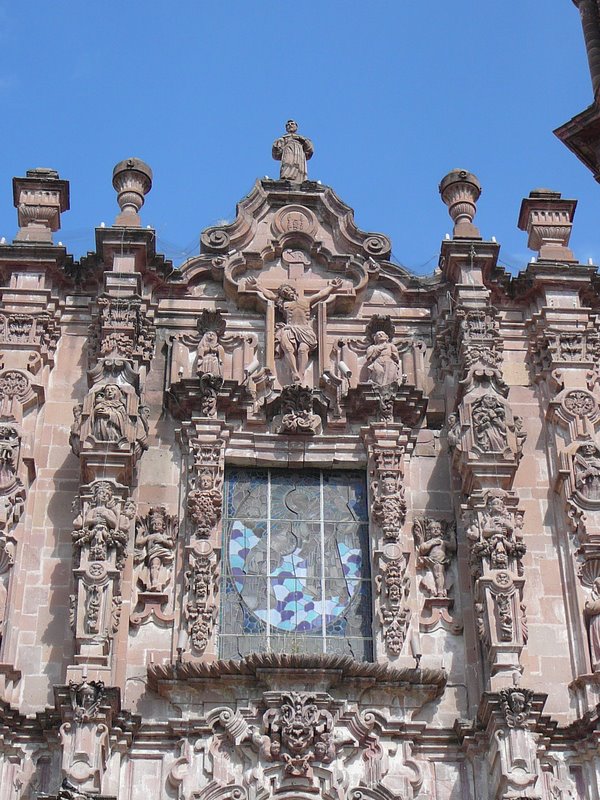
Here's a closeup of the ornamentation around the central window
depicting Saint Francis and (probably) Saint Anthony underneath the
Crucifixion scene. This window is a bit unusual in that it is
pretty much rectangular. Most
Churrigueresque
facades would have a more rounded central window as the baroque did not
like things simple. Above this window, Saint Francis's statue
crowns all.
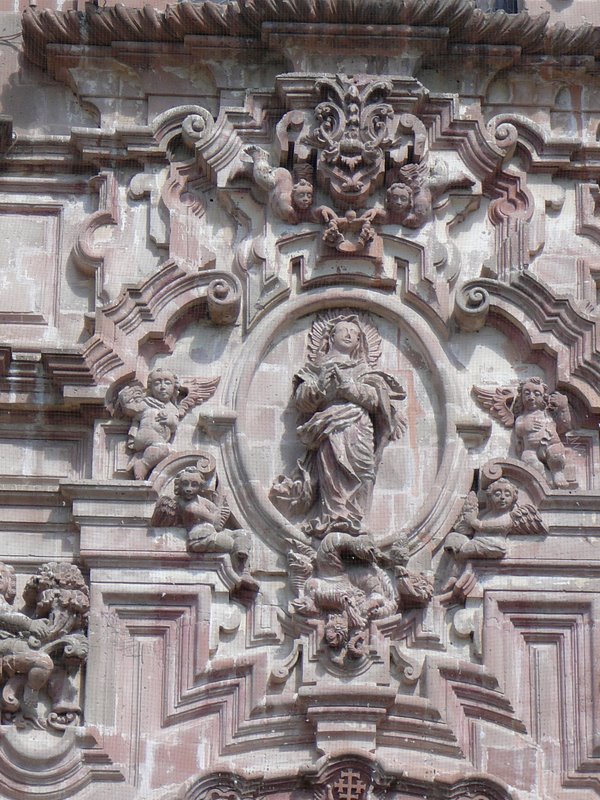
Here Mary ascends into heaven after smashing the evil snakes
(or whatever) with her feet. Four cherubs assist.
For further discussion of the Churrigueresque and to visit a historic church in nearby Dolores Hidalgo,
please click here.
Now for something completely different:
Chapel of the Third Order of Saint Francis
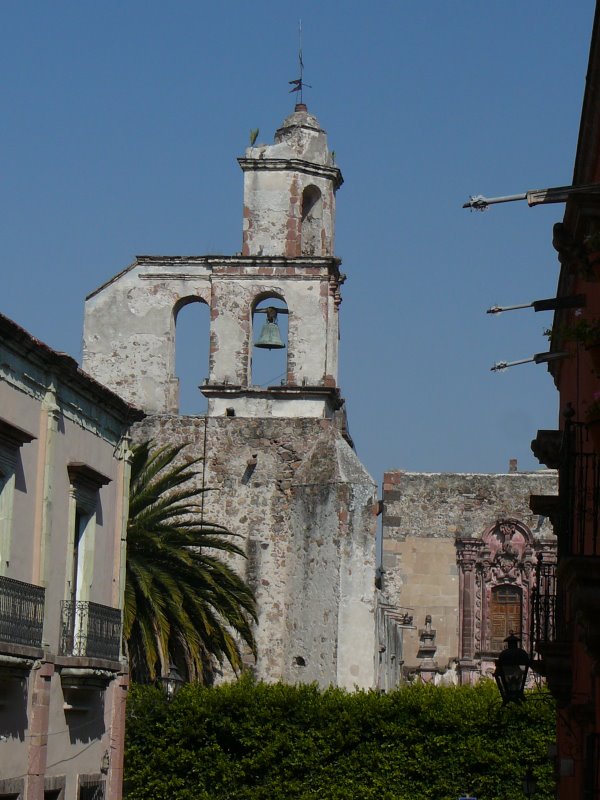
On the west side of the same square of the church of San
Francisco is this fortress-like chapel of the
Third Order of Saint Francis below the simple bell tower
above. It was built in 1713
[24]
but looks much older like some of the early Franciscan
churches in the New World which used for both worship and
defense. Members of the third order (the first
and second were friars and nuns, respectively) were laymen of
Spanish blood who did not live in
religious congregations. They got to wear religious garb in
their caskets (after they died).
Beyond the bell tower is a monastery now fallen into decay.
Members of the third order did NOT live here, of
course, because as a secular order, they lived in the real
world.
San Francisco Interior
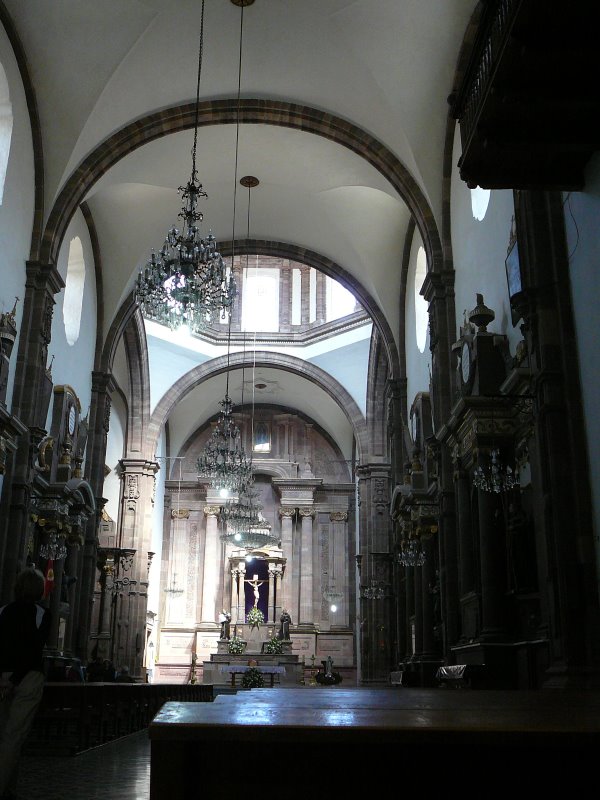
Inside the Church of San Francisco, high ceilings and
natural light,
[219]
along with more decorative restraint than shown in most San
Miguel churches, make this a pleasant religious space.
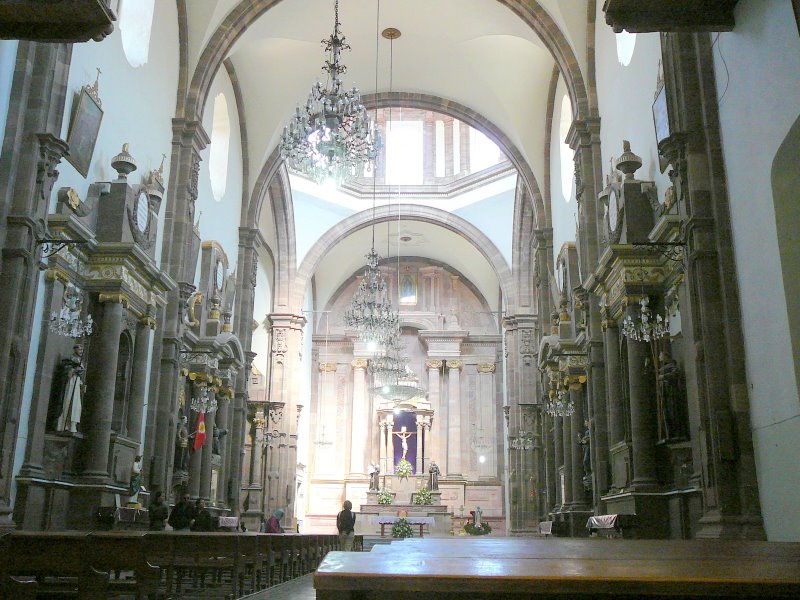
Architect
Tresguerras lined the walls with Ionic
columns. A neo-classic touch for a many the authorities
would arrest for his sympathies with the Mexican
revolution.
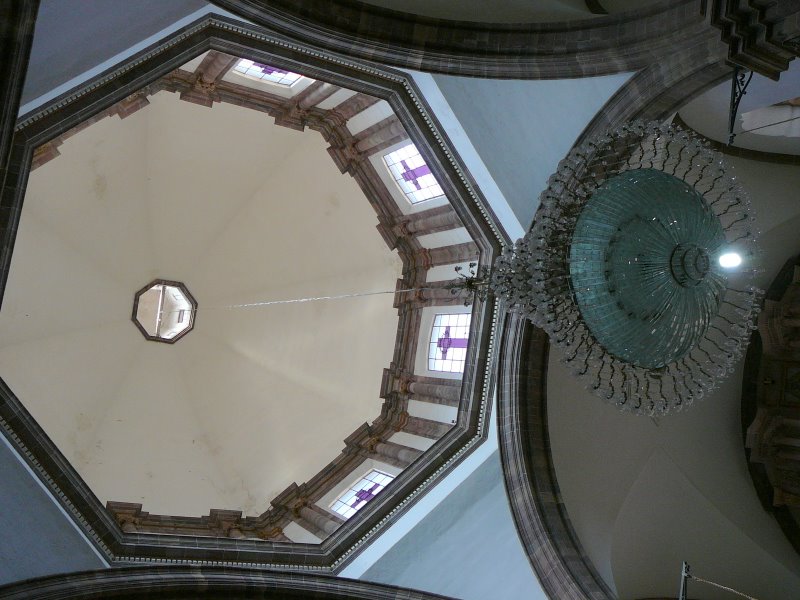
The dome with its lightly stained glass allows natural light
to filter softly down past the chandelier.
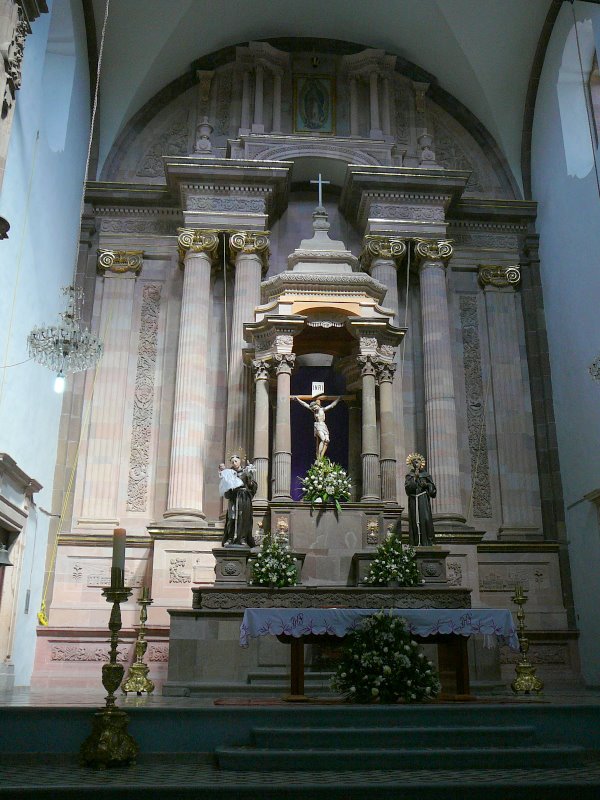
The main altar: Note Saint Anthony of Padua is still
honored by the statue on the left. Anthony is
traditionally shown holding the Christ Child; on his shoulder
is the
lily representing the
Annunciation where the Arcangel Gabriel carried the
flower when he informed Mary she was to be the mother of
Jesus. The whiteness of lilies has been used ever since
by artists to suggest the
purity of Mary.
Today Anthony is revered as the patron of lost causes.
The statue at right is of Saint Francis who eventually
got naming rights here.
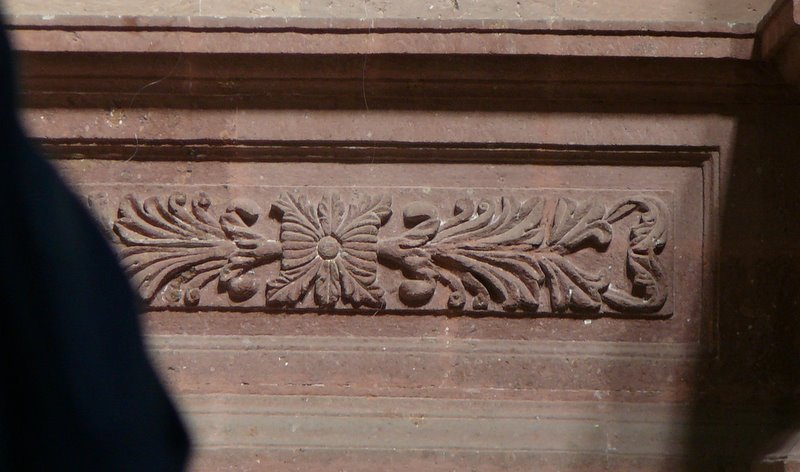
One of the carvings found on each side of the altar ....
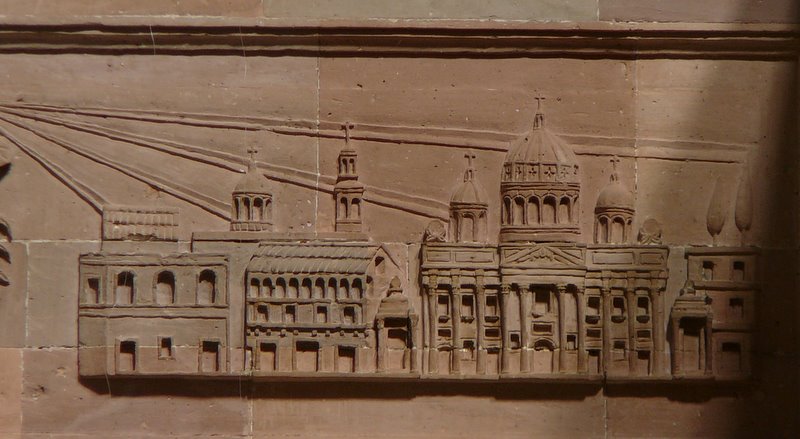
...along with this relief of what appears to be Saint
Peter's Basilica in Rome.
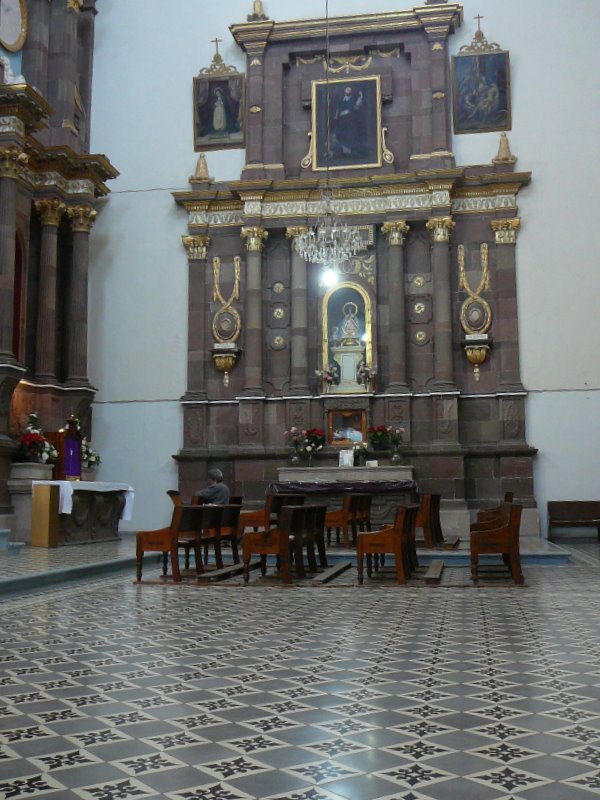
A view of the right side altar, the largest of many that
line the walls of San Francisco. Note the tile floor
and the religious art, much of it from the better local
artists. This region has many tile and pottery
factories.
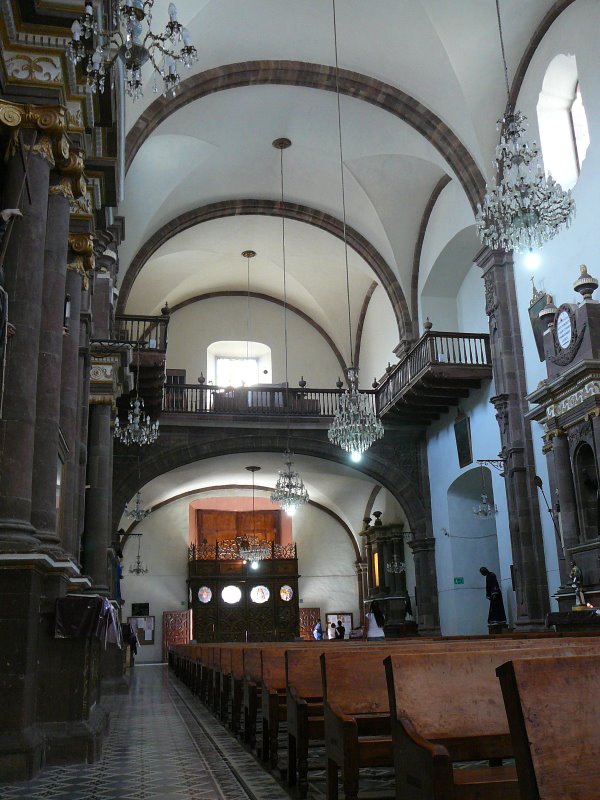
A view from the nave looking back to the choir. Note
the plethora of Ionic columns.

San Francisco is a popular church for weddings. We
found this bride awaiting outside. Most likely this was
for a photo session instead of the main event. Dick's
first (2002) visit to San Miguel was, in fact, to attend a
wedding in this church.
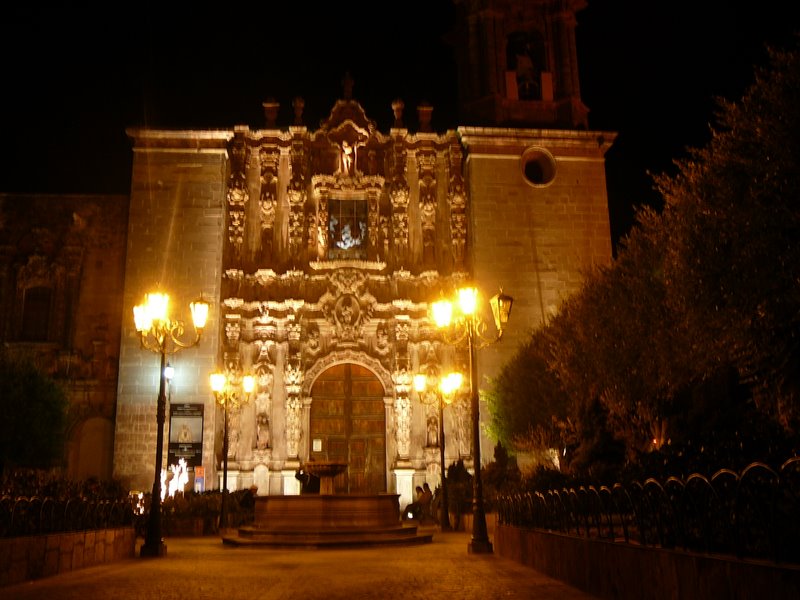
Like any good San Miguel icon, the church is well lit at
night. Given the blur, the photographer may also have
been well lit.





















